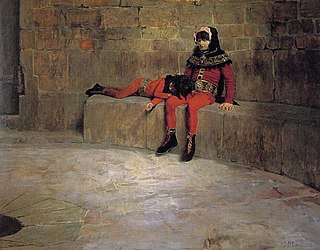Social software, also known as Web 2.0 applications or social apps, include communication and interactive tools often based on the Internet. Communication tools typically handle the capturing, storing and presentation of communication, usually written but increasingly including audio and video as well. Interactive tools handle mediated interactions between a pair or group of users. They focus on establishing and maintaining a connection among users, facilitating the mechanics of conversation and talk. Although we do not have a generally accepted definition, social software generally refers to software that makes collaborative behaviour, the organisation and moulding of communities, self-expression, social interaction and feedback possible for individuals. Another important element of the existing definition of "social software" is that it allows for the structured mediation of opinion between people, in a centralized or self-regulating manner. The most improved area for social software is that Web 2.0 applications can all promote cooperation between people and the creation of online communities more than ever before.
Display advertising is advertising on websites or apps or social media through banners or other ad formats made of text, images, flash, video, and audio. The main purpose of display advertising is to deliver general advertisements and brand messages to site visitors.

Understanding Media: The Extensions of Man is a 1964 book by Marshall McLuhan, in which the author proposes that the media, not the content that they carry, should be the focus of study. He suggests that the medium affects the society in which it plays a role mainly by the characteristics of the medium rather than the content. The book is considered a pioneering study in media theory.

Henry Jenkins III is an American media scholar and Provost Professor of Communication, Journalism, and Cinematic Arts, a joint professorship at the University of Southern California (USC) Annenberg School for Communication and Journalism and the USC School of Cinematic Arts. He also has a joint faculty appointment with the USC Rossier School of Education. Previously, Jenkins was the Peter de Florez Professor of Humanities as well as co-founder and co-director of the Comparative Media Studies program at the Massachusetts Institute of Technology (MIT). He has also served on the technical advisory board at ZeniMax Media, parent company of video game publisher Bethesda Softworks. In 2013, he was appointed to the board that selects the prestigious Peabody Award winners.
Digital Life is a research and educational program about radically rethinking of the human-computer interactive experience. It integrates digital world and physical world. It makes interfaces more responsive and proactive

Ramona Pringle is a Canadian digital journalist, television host, multiplatform media producer, actress and professor. Currently she is the Director of the Transmedia Zone at Ryerson University, an incubator for innovation in media, and a Technology Columnist for CBC.
BD-J, or Blu-ray Disc Java, is a specification supporting Java ME Xlets for advanced content on Blu-ray Disc and the Packaged Media profile of Globally Executable MHP (GEM).
Media psychology is the branch of psychology that focuses on the interaction of human behavior and media and technology. Media psychology is not restricted to mass media or media content; it includes all forms of mediated communication and media technology-related behaviors, such as the use, design, impact and sharing behaviors. This branch is a relatively new field of study because of advancement in technology. It uses various methods of critical analysis and investigation to develop a working model of a user's perception on media experience. These methods are used for society as a whole and on an individual basis. Media psychologists are able to perform activities that include consulting, design, and production in various media like television, video games, films, and news broadcasting. Media psychologists are not considered to be those who are featured in media, rather than those who research, work or contribute to the field.
Transmedia storytelling is the technique of telling a single story or story experience across multiple platforms and formats using current digital technologies, not to be confused with traditional cross-platform media franchises, sequels, or adaptations, but usually working together with these other mediums.
Virtual graffiti consists of virtual objects and/or digital messages, images, multimedia or other annotations or graphics applied to public locations, landmarks or surfaces such as walls, train stations, bridges, etc. Virtual graffiti applications utilize augmented reality and ubiquitous computing to anchor virtual graffiti to physical landmarks or objects in the real world. The virtual content is then viewable through devices such as personal computers, smartglasses, set-top boxes or mobile handsets, such as mobile phones or PDAs. The virtual world provides content, graphics, and applications to the user that are not available in the real world. Virtual graffiti is a novel initiative aimed at delivering messaging and social multimedia content to mobile applications and devices based on the location, identity, and community of the participating entity.

Antoine Bello is a French-American author born in Boston, Massachusetts, whose works have been widely translated. His novels touch on multiple subjects, such as the relation between reality and fiction, human cognition and journalism. He writes in French, his native tongue. He has been living in the greater New York Area since 2002.
Augmented learning is an on-demand learning technique where the environment adapts to the learner. By providing remediation on-demand, learners can gain greater understanding of a topic while stimulating discovery and learning.

Andrea Phillips is an American transmedia game designer and writer. She has been active in the genres of transmedia storytelling and alternate reality games (ARGs), in a variety of roles, since 2001. She has written for, designed, or substantially participated in the creation of Perplex City, the BAFTA-nominated Routes, and The 2012 Experience, a marketing campaign for the film 2012.

Invizimals is an augmented reality video game franchise developed by Novarama and published by Sony Computer Entertainment Europe. The series, which originally began in 2009 as a video game on PSP, has since inspired toys, trading cards, comics and an animated television series telling an interconnected transmedia story.

Zviane is a comics creator and a musician from Montréal, Quebec.

Check, Please! is a 2013 webcomic written and illustrated by Ngozi Ukazu. The webcomic follows vlogger and figure-turned-ice hockey skater Eric "Bitty" Bittle as he deals with hockey culture in college, as well as his identity as a gay man. Ukazu provides fans of Check, Please! a variety of extra content through her Tumblr and a dedicated Twitter account; establishing a piece of transmedia storytelling to expand on worldbuilding. A large fan base has accumulated around Check, Please!, and when Ukazu set up a Kickstarter campaign to fund the physical release of a first volume of the webcomic, she reached her goal with ease.

Webcomics in France, literally "bande dessinée en ligne", are usually referred to as either blog BD or BD numérique. Early webcomics in the late 1990s and early 2000s primarily took on the form of personal blogs, where amateur artists told stories through their drawings. The medium rose in popularity in economic viability in the country in the late 2000s and early 2010s. The Turbomedia format, where a webcomic is presented more alike a slideshow, was popularized in France in the early 2010s.

Messenger Kids is a messaging app and platform developed by Facebook in December 2017. The platform is designed for a young audience as an safer alternative to the Facebook Messenger platform. User can register without phone numbers, but only with their first and last names only. It was initially launched for iPad tablets with the iOS operating system in the United States only, though later support for iPhone and Android devices was added and it was rolled out in Canada, Peru, and Mexico.
















